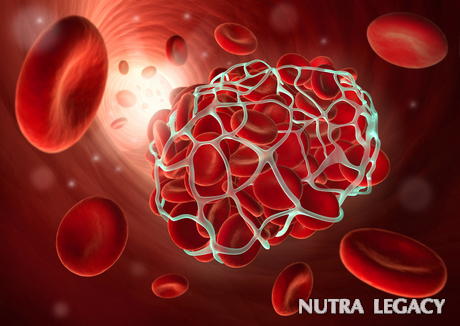How to prevent blood clots?
Blood clots, also known as Deep Vein Thrombosis (DVT) is life threatening and should be taken seriously. While blood clots can happen anywhere in the body, they are most common in the legs, pelvis and thigh areas… The blood clot is a part of our natural healing process, as we see the scab that develops on a cut. However, when a blood clot dislodges from the veins and travels through the body to the heart, it can cause death Symptoms may be slight or noticeable. What can be the causes and how to prevent blood clots?

There are a variety of causes for blood clots. Some are lifestyle causes and others can be medical and hereditary. Anyone over 60 years of age can be prone to blood clots. Other factors for those at risk include: Obesity, pregnancy, taking oral contraceptives (birth control pills), infections, smoking, cancer, poor deep vein circulation, post surgery, air flights of a long duration.
Initial symptoms of a blood clot can involve one or many of the following: pain or light swelling in the leg, visibly large or discolored veins, skin that has a warm feeling to the touch. The most serious symptoms that absolutely require that you seek medical attention are: faint or dizzy feeling, excessive sweating, sharp chest pain, a rapid pulse, coughing up blood, shortness of breathe. While there might be many disorders that the symptoms relate to, it is advised to talk to your medical provider if you have any of the symptoms of a blood clot.
Pharmaceutical treatments for blood clots usually involve two types of drugs: anticoagulants (blood thinners) and thrombolytics (drugs that dissolve the clots). There are side effects of these drugs and your physician should accomplish a battery of tests to ensure that your body will not have a negative side effect.
There are natural and integrative methods that have been used throughout the ages to address the question of how to prevent blood clots. Garlic has antibiotic properties, reduces cholesterol and assists in preventing blood clots. Practitioners and dieticians have also advised adding ginger. To our delight, dark chocolate has also been added to the list to include in your diet. Vitamin C has the ability to keep down the oxidization process of blood clots. Another herb that you might consider including is hawthorn. This has dangerous properties if not taken properly, so please consult with your physician before adding to you dietary regiment.
Lifestyle changes that can assist in the prevention of blood clots: Reduce your intake of alcohol and don’t smoke. If your job requires that you sit at a computer, get up and move around often and don’t cross your legs. Increase your daily exercise and movement activity. If you must be on a long air flight that requires sitting for long periods of time, buy and wear support stockings. There are some that are designed specifically for air flights. Avoidance of tight fitting clothes is another lifestyle change. Of course, losing weight is another major suggestion.
The information supplied in this article is not to be considered as medical advice and is for educational purposes only.
|
 3 Jun 2010 3 Jun 2010 |

I've been taking birth control pills literally for years and just recently I've been noticing some unidentified leg pains. It says here that could be one of the symptoms and that oral contraceptives could be one of the causes. Is this a cause for worry? Should I go to the doctor immediately or could it be something else?January 29th, 2011 at 9:43 am
I've been taking birth control pills literally for years and just recently I've been noticing some unidentified leg pains. It says here that could be one of the symptoms and that oral contraceptives could be one of the causes. Is this a cause for worry? Should I go to the doctor immediately or could it be something else?January 29th, 2011 at 4:43 am